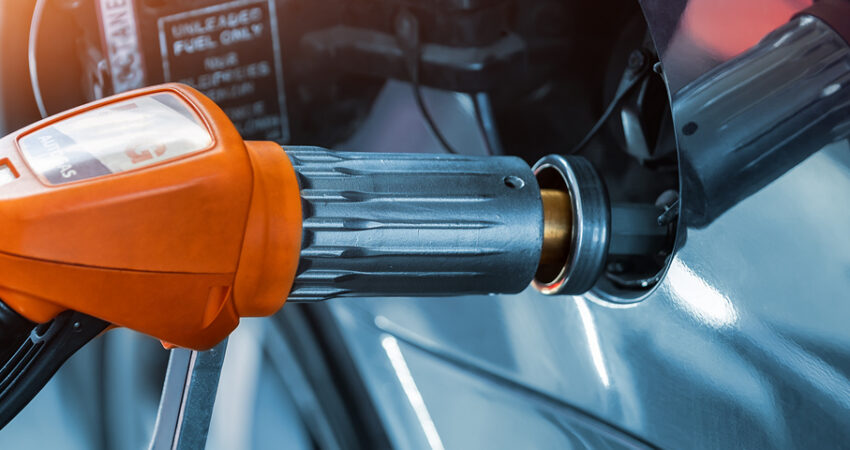Copyright: Adobe Stock #525947435
The EU has decided to expand its list of sanctioned goods and add a ban on liquefied petroleum gas (LPG) imports from Russia to the already extensive list of foreign trade restrictions. Although Russia’s share of supplies is small, the ban could nevertheless be a destabilising factor for a number of sectors of the European economy.
Significant structural changes in the European Union economy are continuing in 2024. At the end of 2024, unless there are significant changes in Brussels’ foreign policy, a ban on imports of LPG from Russia will come into force. This measure was contained in the 12th EU sanctions package adopted in December 2023, but a 12-month transitional period was introduced to adapt the market, which involves LPG supplies being permitted until 20 December for contracts concluded before 19 December 2023.
What is LPG?
Liquefied petroleum gas is a product of petroleum refining and gas production, a mixture of propane and butane gases that are compressed and stored in liquid form at low temperatures. LPG is used in a variety of industries, from energy to chemicals, including plastics and fertilisers. In Europe, where traditional energy sources such as coal and oil are gradually being sidelined, LPG is becoming an important component of the energy strategy, especially as a backup energy source in an energy crisis. Due to its high energy density and relatively low CO2 emissions during combustion (35% less than coal and 12% less than oil), LPG is also common as an alternative fuel for transport, including road vehicles and marine vessels. Moreover, according to Liquid Gas Europe, the infrastructure and equipment for LPG is almost entirely suitable for the future use of renewable liquid gases, the production of which is expected to grow in the coming years.
Russia’s share is not large, but decisive for certain sectors
The European economy is heavily dependent on LPG imports, as domestic LPG production is limited. According to the European Commission, Russian supply made up around 6% of total LPG imports to the EU in 2023 with a total value of over €1 billion. Because the transition period was introduced only for ‘old’ contracts, Russian seaborne LPG exports to countries within the EU in the first quarter of 2024 sank 52% year-on-year to 54,000 metric tonnes, according to data from shipping analytics firm Vortexa. This billion euros does not seem like a large amount for the huge European market and it is unlikely that an embargo on such volumes of LPG will slow down the Russian economy and cause it any significant damage. However, the share is large enough to cause cascading effects in various EU sectors and the EU will simply be shooting itself in the foot.
In any case, many countries are strongly opposed to any compromise. In particular, the Latvian government urged companies to end Russian petroleum gas imports as soon as possible and to adapt in time for the expected sanctions. Prime minister Evika Siliņa said it was understandable that a transition period was needed for businesses to be able to terminate long-term contracts. Economics minister Viktors Valainis said this is a good example of how the EU can achieve a larger effect by protecting the internal market and switching to other energy sources.

Copyright: Adobe Stock #496927588
At the same time, analysts point out that such a move could reduce the availability of LPG for consumers. Its cost for all EU industries will increase significantly, from 15 to 40 per cent. In the short term, experts warn, the risk of destabilisation of the pan-European fuel market is increasing, as more than 10 million cars in Europe, about 4% of the total number, run on autogas. Against the backdrop of increased demand for petrol and diesel, this may lead to price growth and increased inflationary pressure. Small and medium-sized companies will feel the most negative effects. Some may even face bankruptcy.
Is there a solution?
So where will Europe get the 6% of imported LPG that will be gone after the embargo? In order to compensate for Russian LPG supplies, the load on Europe’s railway and port infrastructure will have to be increased – and this will have to be done without an alternative to cheap Russian LPG.
Supplies to the EU of US analogues are many times more expensive. In the first quarter of 2024, the EU has already had to increase purchases from the US: Vortexa’s data shows that butane and propane exports to the Mediterranean from the US reached 1.56 million mt in the first quarter of 2024, while flows into northwestern Europe totalled 1.49 million mt over the same period. However, due to port infrastructure constraints these imports cannot be increased indefinitely. A slight increase in the capacity of receiving terminals is expected only after 2025-2026. In addition, analysts believe that Europe will also have to resort to supplies from African countries, in particular Morocco.
Switching to new marine supply routes will add volatile freight rates (which will affect the cost for end consumers), as well as arbitrage values, to the already complex price equation of liquefied gases. Asian petrochemical demand will be a major determining factor in global LPG export flows in the year ahead.
The introduction of a ban on Russian LPG imports poses serious challenges for the European economy, increasing uncertainty in energy supply and raising fuel prices. Given the already existing geopolitical risks and high energy prices, this measure could further increase the financial burden on European companies. This could affect their global competitiveness. In the context of minimising negative consequences, it would be logical to consider extending the transition period for abandoning LPG from Russia. These volumes are crucial for the market, but not so large on a geopolitical scale. Decisions should be based on economic calculations and long-term sustainability, not on immediate political considerations.

